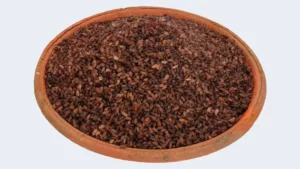GS III – Agriculture

-
Characteristics:
- A traditional rice variety of Kerala, known for its high salt tolerance in waterlogged coastal regions.
- Recognized with a Geographical Indication (GI) Tag for its distinct farming method and heritage.
- Cultivation Cycle:
- June to November: Rice is cultivated during low salinity periods.
- November to April: The fields are used for prawn farming when salinity increases.
- Growing Regions: Found in Thrissur, Alappuzha, Kottayam, and Ernakulam districts.
Benefits of Pokkali Rice Farming
- Climate Adaptability: Naturally resilient to salinity and flooding, making it ideal for climate-vulnerable coastal zones.
- Sustainability: The integrated rice-prawn rotation enhances soil fertility without chemical fertilizers or pesticides.
- Economic Value: The rising demand for organic and climate-resilient crops makes it a profitable option.
- Health Benefits: Rich in antioxidants and protein, with low carbohydrate content, making it suitable for people managing diabetes.
Challenges in Pokkali Cultivation
- Labor-Intensive: Requires specialized farming skills, making it less attractive for large-scale commercial farming.
- Limited Expansion: Grows only in specific saline and soil conditions, restricting its cultivation area.
- Market Competition: Faces challenges from high-yielding commercial rice varieties.
Conservation & Sustainable Farming Initiatives
- ‘Oru Nellum, Oru Meenum’ Project:
- A Kerala government initiative covering 2,000 acres of Pokkali farmland.
- Supports a six-month rice cultivation period followed by six months of fish farming, ensuring sustainable agricultural practices.
- Biodiversity Conservation:
- The unique salt-resistant genetic traits of Pokkali rice hold value for developing future climate-resilient crop varieties.




